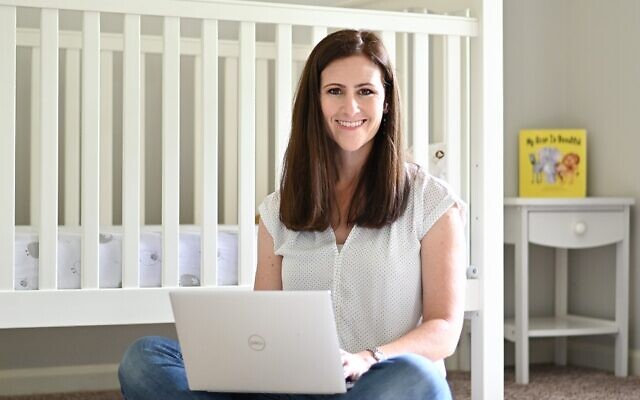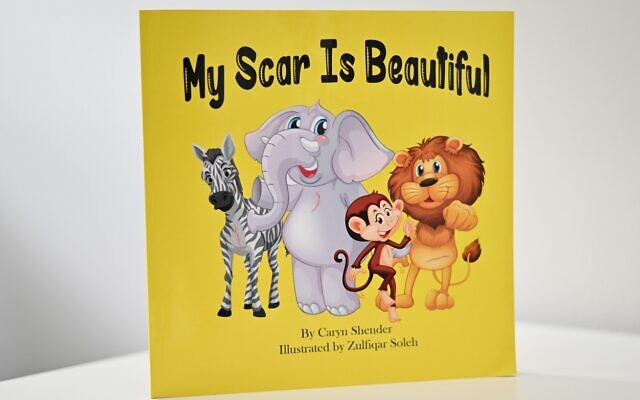Shender is a Certified ‘Baby Whisperer’
Caryn Shender, a sleep specialist, has a pragmatic approach to getting parents in the right groove for a healthier baby and more quality family time.
After 37 years with the Atlanta Journal-Constitution and now with the AJT, , Jaffe’s focus is lifestyle, art, dining, fashion, and community events with emphasis on Jewish movers and shakers.

Caryn Levy Shender lends her expertise as a pediatric sleep specialist and coach to give parents better time management and happier children with good sleep habits.
According to The American Academy of Pediatrics, sleep problems affect up to 50 percent of children; and approximately 3,400 cases of Sudden Unexpected Infant Death Syndrome (SUIDS) occur every year with 90 percent of infant deaths occurring in first six months.
Thus, practicing safe sleep reduces the risk of infant death. Shender works with parents with kids aged 0-6 years with one-on-one coaching programs and classes. What parent hasn’t questioned, rock or don’t rock? Feed or not before sleep? Or how much is too much napping? Both practical and non-judgmental, Shender addresses these hot topics as she personalizes the approach to every child and family.
Shender is a certified pediatric sleep consultant through the Center of Pediatric Sleep Management, incorporating extensive training on evidence-based sleep research. She was initially inspired by her own daughter, who, at two months old, was diagnosed with ALCAPA, a rare congenital heart defect affecting 1:300,000 births and required two emergency open-heart surgeries.

Shender recalled, “Even with all that, she was the best baby! Rarely fussy, always happy. When she’d cry at night, my panic alarms would go off. I’d lay awake watching the monitor to assure she was breathing. Turned out, she was a normal six-month-old. I dove into all things ‘sleep’ and realized the importance of quality rest. My confidence as a parent improved. My husband and I were well-rested and had more time and energy. I’ve always been passionate about making a difference…improving sleep for families can transform lives.”
Shender added that her experience with her newborn daughter also inspired her book, “My Scar is Beautiful.”
Shender understands the factors that lead to sleep problems. Parents start with being well meaning. Sleep can be misunderstood because of overwhelming available conflicting information with opinions disguised as facts.
She mused, “It’s hard to sort through the noise. The most common sleep issues in children are often the result of being under or overtired due to schedule inconsistencies and not following nap and night schedules.”

Shender prescribes using age-appropriate schedules and wake windows. Another factor is when a baby relies on dependent sleep associations like being fed or rocked to sleep. Parents may unintentionally contribute to sleep problems by interrupting the child’s opportunity to fall back to sleep when they rush in after the baby wakes up crying.
She continued, “Being consistent and sticking to boundaries is essential, especially for toddlers and preschoolers, who are known for pushing limits. By doing so, parents can help their child understand what is expected of them.”
Shender explains the misconception of Cry It Out (CIO). While CIO is the most controversial method, there are other sleep methods.
She said, “No parent likes to hear their child cry, but it’s my responsibility to help families choose the appropriate approach to achieve goals. Another misconception is that it’s psychologically damaging to the child. A 2012 randomized clinical trial found that non-sleep-trained 6-year-olds were no different than kids who had been sleep trained as babies with regards to emotional development, psychological health, parent-child closeness, and parental attachment. Sleep training is just teaching children to fall asleep without parent-led assistance.”
Shender teaches a monthly crash-course at Studios Brookhaven on everything essential for baby and toddler sleep. Leave feeling empowered with actionable steps. For kids aged 4-24 months. Stay tuned for her newborn class coming in 2024. For more information, visit www.sleeptightonight.com.
Shender closes her correspondences, “Sleep tight and sweet dreams.”
Shender’s Five Practical Tips:
1. Follow wake windows: an age-appropriate max time that baby can be awake between sleeps. Use wake windows to find your child’s sweet spot to avoid being undertired or overtired.
2. For 3 months-plus, have baby sleep horizontally whenever possible. If baby is used to sleeping plush and cozy during the day, they won’t want to sleep on a horizontal, firm mattress at night.
3. Drowsy is the enemy of sleep. Put baby in the crib calm, chill, ready to sleep and awake.
4. Eliminate dependent sleep associations: A sleep association is where baby is dependent on help to fall asleep like being rocked or fed to sleep, relying on a swing or car, needing the pacifier replaced or holding/laying with them to sleep.
5. Don’t keep baby up later at night in hopes they will sleep later in the morning. This will cause fragmented sleep and early wakeups. Opt for an extra catnap or early bedtime but not before 6 p.m.



comments